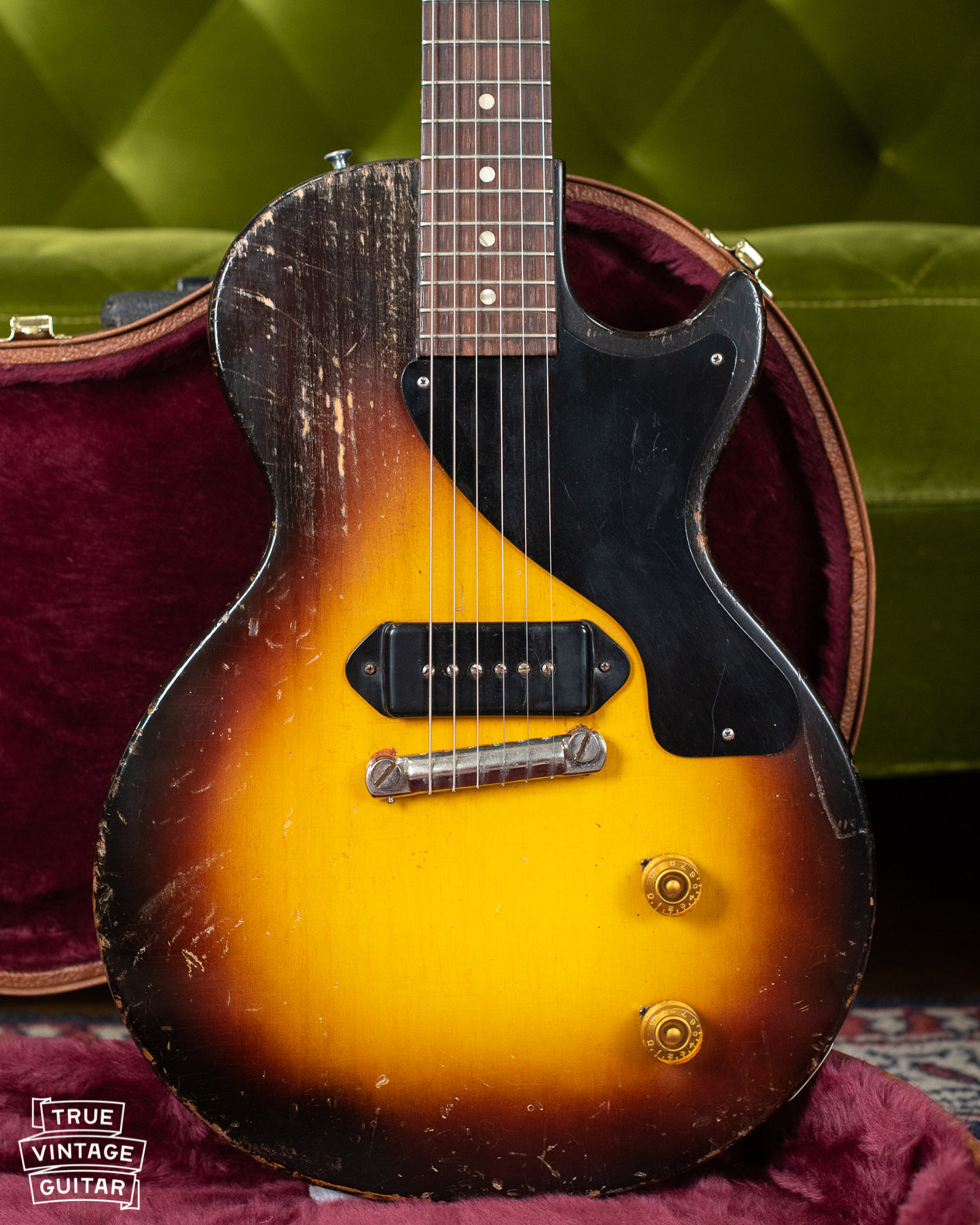This very clean 1958 Gibson ES-335 has just come through the shop and is full of very cool first year features like the unbound neck and the thin top. We help families sell their high end vintage Gibsons, so when we were contacted by the owners looking to sell this ES-335, we were floored. 1958 is the first year for Gibson's ES-335 model and before they made a couple of important refinements. As a guitar collector, I couldn't wait to get it in hand to inspect for all the interesting details.
1958 has become my favorite year for the ES-335 after owning this guitar. If you have a vintage Gibson ES-335 and looking to sell then you can contact me here: Sell a Gibson. Or if you're looking for helping finding the year of your ES-335 then check out How To Date a Gibson ES-335.

1958 is the first year for the Gibson ES-335
Gibson was experimenting with a few revolutionary new models in 1958 including the Flying V, the Explorer, the EDS-1275 double neck guitars, an entirely new redesign for the Les Paul Standard, and a more traditional looking new model it called the ES-335 T. The unique design of the ES-335 was that it was a thin body archtop guitar with a solid center block to resist feedback at high stage volume. It must have worked since none of the other revolutionary new models have been in continuous production since that year like this one.
The first year ES-335s had no neck binding, a thinner top, and many even had a neck pitch that was too shallow to achieve low string action height. To combat this, Gibson made a special ABR-1 bridge which was about half the height of the standard bridges. This example happened to have a perfect neck set so that there was plenty of room for adjustment under the bridge.

Did you know that the first production ES-335s in 1958 lacked the neck binding found on all the following production years? Neck binding refers to the thin cream white strips of plastic on the edge of each side of the neck. Gibson may have been resting on the fact that the design was unique instead of on a fancy trim package for its first year. I personally love the more austere look of the '58s with no binding.

The "Thin Top" ES-335s from 1958 and 1959
When I started buying vintage ES-335 guitars, I kept hearing about a feature that players called the "thin top". Since I couldn't find any pictures of it on the internet, I was excited to photograph this one when it came in. Have a look at the picture below showing the cross section of the thin top laminate on this 1958 ES-335. You can see that the outer wood of the cross section has three layers instead of four. This thinner top was used in 1958 and early 1959.

The 1958 Gibson ES-335 neck angle and thin bridge
One issue that's common to 1958 Gibson ES-335s is a shallow neck angle. Gibson's set many of the necks with a neck pitch which puts the bridge all the way down on the top in order to achieve low action up the neck. The neck angle was updated in late 1958 and early 1959, but Gibson had a simple solution for the earlier guitars instead of scrapping them: they produced a extra thin bridge that could be lowered down much closer to the top. You can see in the picture earlier in this post that there is actually a lot of space under this bridge, so it's likely that this guitar was made after the neck pitches got sharper but before the trim was updated to include neck binding. The original thin ABR-1 bridge in the picture below bears the "GIBSON ABR-1" part number and foundry mark on the bottom. This was a special bridge Gibson made for the first year of the model instead of the often seen shaved ABR-1 bridge.

When this example came in, the original bridge was collapsed badly in the middle and a reproduction bridge was in place. My opinion is that these bridges collapsed as a result of the heavy gauge strings Gibson used in the late 1950s and the extra downward pressure of the strings if the stop bar tailpiece is too low. We have a special made caul that can slowly reshape the ABR-1 back to its original shape. We've had good success keeping them in the correct shape with 10 gauge strings and a slightly raised stop bar tailpiece. When you raise the tailpiece, the angle of the strings over the saddles is less acute. The downward pressure of the strings is decreased and the bridge is less likely to collapse.
Have a 1958 Gibson ES-335?
As a guitar player and collector, I was thoroughly smitten by the playability, tone, and historical importance of this 1958 Gibson ES-335. It now lives in a friend's collection, but I've retained visitation rights so that I can still get a taste of it. If you own a vintage Gibson ES-335 and are considering selling, then I'd love to have a look at it. There's a good reason why this model has been in continuous production since '58. I loved every minute of playing, inspecting, and photographing this one.
If you're considering selling a vintage Gibson then you can contact me here: Sell a Gibson. We help sellers authenticate, evaluate, and sell their high end vintage collectible Gibson guitars like the ES-335, Les Paul, Firebird, SG, and more. We specialize in electric guitars made in the 1950s.
Thanks for reading,
John Shults
Owner, True Vintage Guitar




